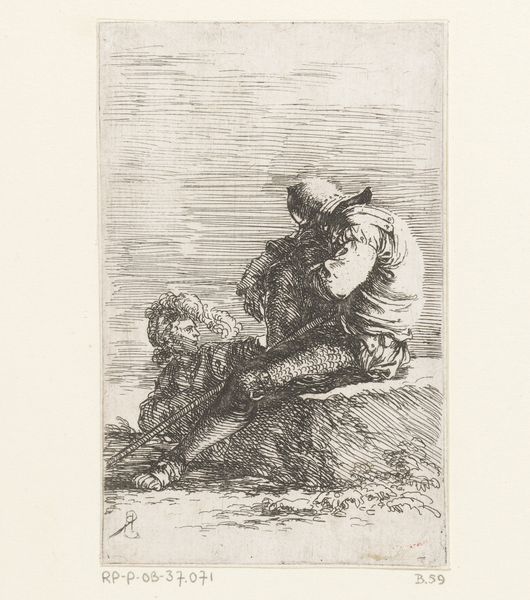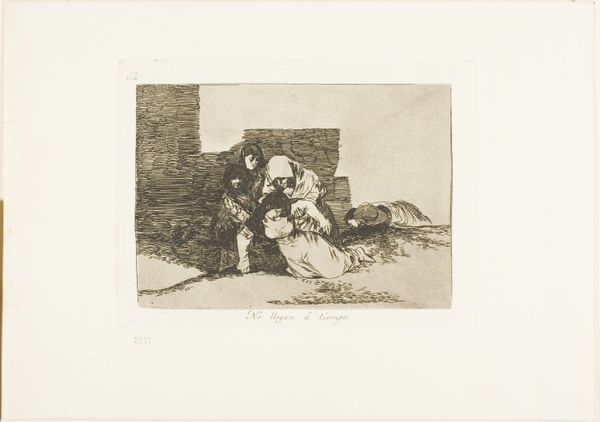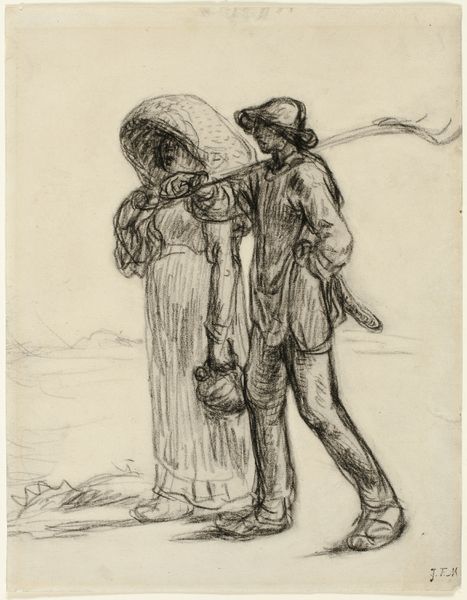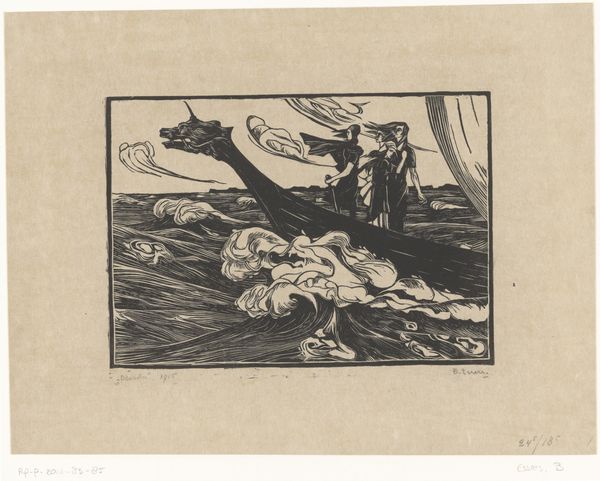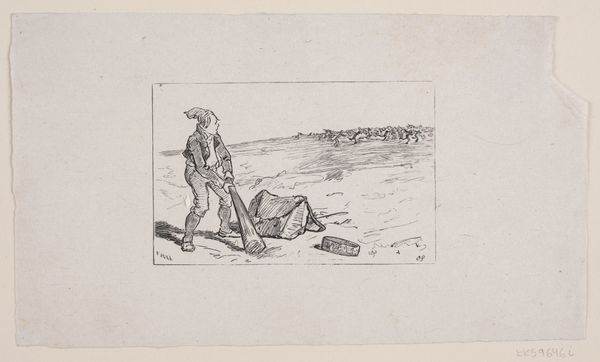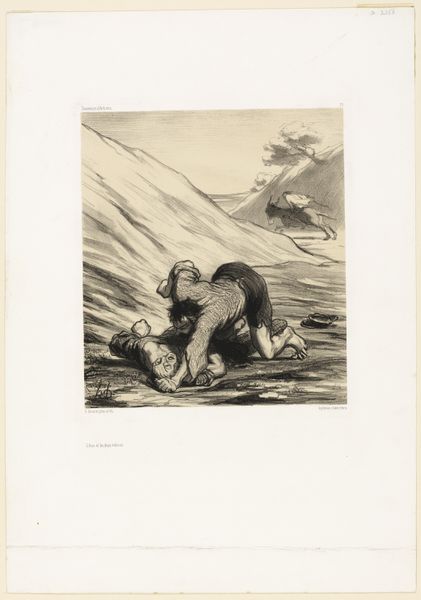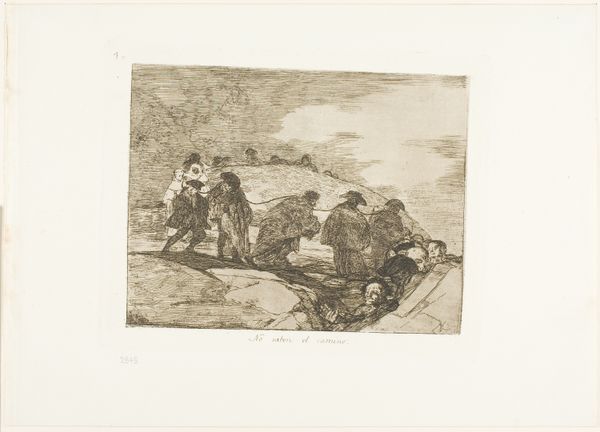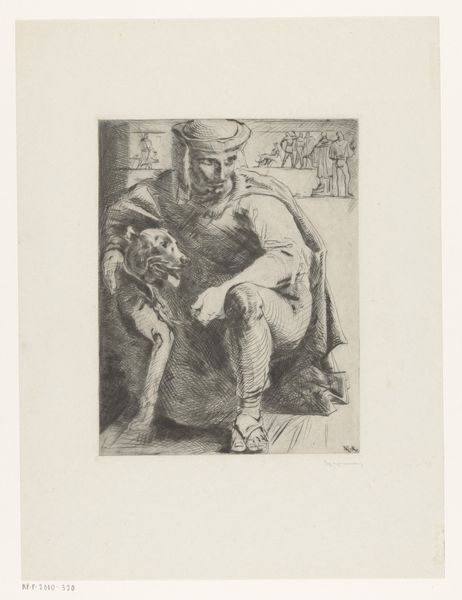
drawing, lithograph, print, paper, pencil
#
drawing
#
ink drawing
#
lithograph
# print
#
pencil sketch
#
landscape
#
figuration
#
paper
#
pencil
#
modernism
#
realism
Dimensions: 253 × 442 mm (image); 379 × 555 mm (sheet)
Copyright: Public Domain
Editor: This is Théophile Alexandre Steinlen's "Serbian Cavalry, Second Episode" from 1916, made with pencil and lithograph on paper. There's a deep sadness in this piece; a man and two children huddled together, maybe in refuge. What narratives do you see at play here? Curator: What I see immediately is a stark visual representation of forced migration and the brutal realities of war, particularly its impact on vulnerable populations. Considering its date, 1916, this artwork can be understood within the context of World War I and its widespread displacement of communities. Editor: How does the artist make that visible, though? I mean, aside from just showing people in distress. Curator: Steinlen uses realism to depict the suffering. The raw lines, the exhausted postures, and the desolate landscape all speak volumes about the loss and desperation experienced by refugees. Where does it take place, do you think? Editor: It looks barren, maybe a field after battle? Curator: Precisely. The almost complete lack of setting is quite meaningful: This is *anywhere*, it is *everywhere*. Steinlen seems to be suggesting how war tears people from their homes, stripping away not just their physical possessions, but their identities and social networks as well. It urges us to see the shared humanity of those displaced by conflict and consider our own roles in addressing such crises. Editor: I see that more clearly now, thank you. It makes me consider not just this specific historical moment, but the broader issue of displacement across different times and places. Curator: Exactly, art is at its most powerful when it connects historical narratives with contemporary theory. The social role of the artist.
Comments
No comments
Be the first to comment and join the conversation on the ultimate creative platform.

